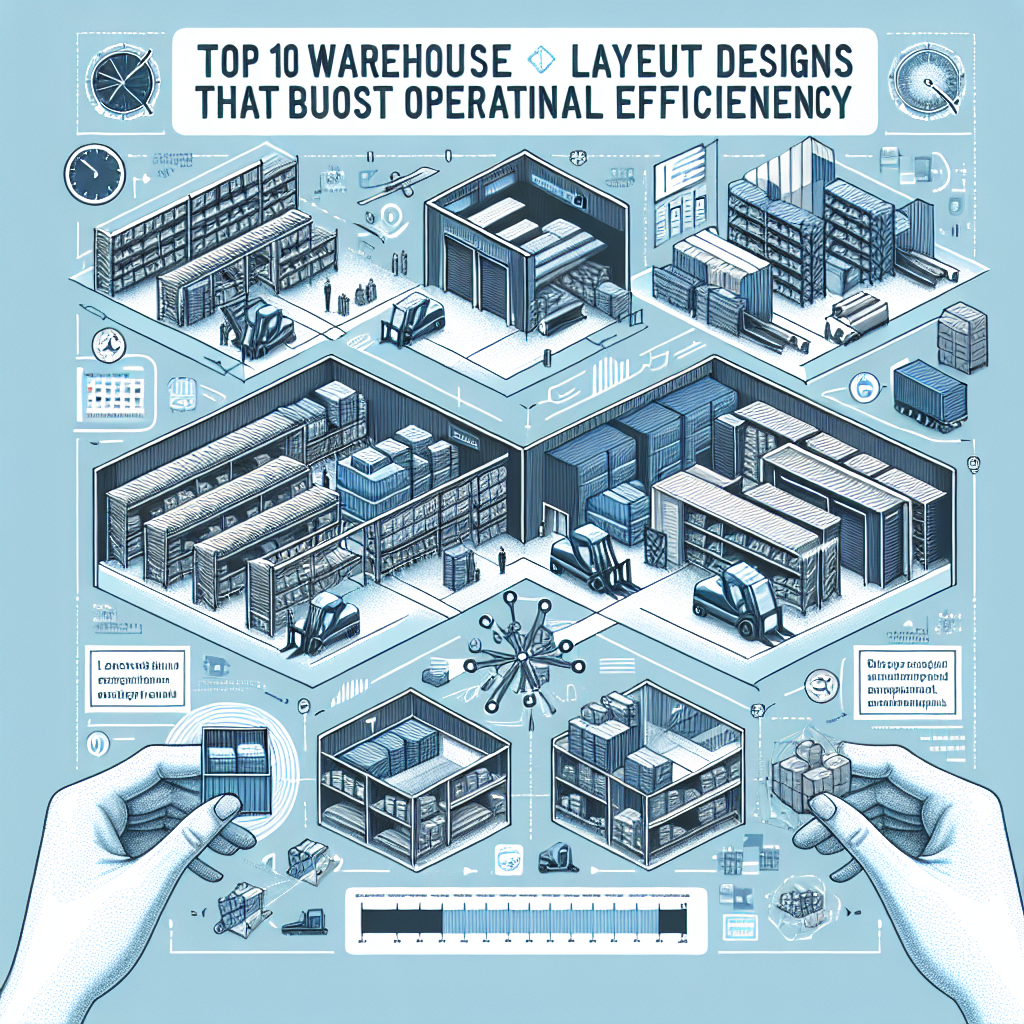In an ever-evolving world of logistics and supply chain management, the layout of a warehouse plays a crucial role in optimizing operational efficiency. An effective design can save time, reduce costs, improve safety, and enhance productivity. In this article, we’ll explore the top 10 warehouse layout designs that can revolutionize the way you operate your facility.
1. The Basic Warehouse Layout
The basic warehouse layout is straightforward and intuitive. It typically consists of aisles with shelves on both sides, leading to a centralized receiving and shipping area. This simplicity fosters easy navigation for staff and equipment, reducing time lost in transit.
Benefits
- Easy to implement
- Cost-effective for small to medium-sized warehouses
- Simplified inventory management
2. The U-Shaped Warehouse Layout
The U-shaped layout is particularly effective for warehouses that handle both incoming and outgoing goods. It features a design that allows items to be received on one end, stored along the sides, and shipped out from the opposite end.
Benefits
- Streamlined movement of goods
- Enhanced communication among warehouse staff
- Quick accessibility to frequently handled items
3. The L-Shaped Warehouse Layout
The L-shaped layout combines the receiving and shipping processes within two distinct sections of the warehouse. This design allows for a dedicated area for storage, enhancing the separation of inbound and outbound logistics.
Benefits
- Reduced congestion in busy areas
- Improved workflow efficiency
- Better space utilization for larger products
4. The Circular Warehouse Layout
The circular layout is an innovative approach where the workspace is organized in an open area with goods flowing in a circular motion. This design encourages easy access and movement, minimizing travel time for employees.
Benefits
- Enhanced employee collaboration
- Increased visibility for inventory management
- Reduced risk of bottlenecks
5. The Grid Warehouse Layout
The grid layout consists of long aisles that run parallel to each other, allowing for an organized and systematic approach to storage. This is most effective for high-density inventory, making it easier to locate and retrieve products.
Benefits
- Maximized vertical storage options
- Efficient use of space
- Simplified picking processes
6. The Flow-Through Warehouse Layout
The flow-through design focuses on continuous movement of goods, with receiving and shipping located at opposite ends. This layout is optimal for perishable goods and helps reduce handling time.
Benefits
- Decreased product handling
- Reduced risk of spoilage
- Enhanced throughput rates
7. The Dynamic Warehouse Layout
The dynamic layout adapts to fluctuating inventory levels and product types. This flexible design allows for quick reconfigurations to meet changing business needs, making it highly responsive.
Benefits
- Optimized for seasonal demand
- Increased agility in operations
- Better inventory turnover rates
8. The Cross-Docking Warehouse Layout
Cross-docking is a technique where incoming goods are directly transferred to outgoing trucks with minimal storage time. This layout eliminates the need for storage, making it ideal for time-sensitive items.
Benefits
- Reduced holding costs
- Faster order fulfillment
- Improved supply chain agility
9. The Multi-Tier Warehouse Layout
The multi-tier layout maximizes space by utilizing vertical storage systems and multi-level shelving to increase capacity without expanding the warehouse footprint. This design is perfect for high-volume operations.
Benefits
- Greater efficiency in space utilization
- Enhanced inventory control
- Improved picking speed
10. The Automated Warehouse Layout
Incorporating automation technology into the warehouse design can significantly boost efficiency. This layout features systems like Automated Guided Vehicles (AGVs) and robotics that manage storage and retrieval processes.
Benefits
- Reduced labor costs
- Increased accuracy in order fulfillment
- Enhanced safety for employees
Conclusion
Choosing the right warehouse layout design is essential for enhancing operational efficiency and meeting your business’s specific needs. By considering the various layouts discussed in this article, you can make informed decisions that boost productivity, improve safety, and ultimately drive success. Remember, the right design is not just about aesthetics; it’s about creating a thriving operational ecosystem that serves your business goals.
Let’s Talk!
If you’re struggling with your current warehouse layout or looking to upgrade, it’s time to evaluate your options. Engage with our expert team to find out how we can help you optimize your operations today!


